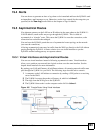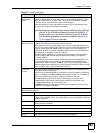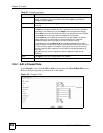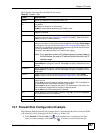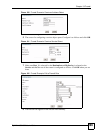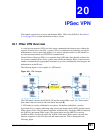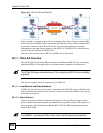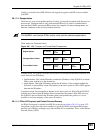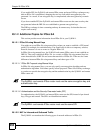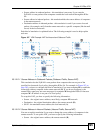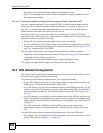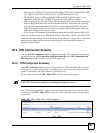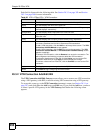
ZyWALL USG 300 User’s Guide
291
CHAPTER 20
IPSec VPN
This chapter explains how to set up and maintain IPSec VPNs in the ZyWALL. See Section
5.4.4 on page 116 for related information on these screens.
20.1 IPSec VPN Overview
A virtual private network (VPN) provides secure communications between sites without the
expense of leased site-to-site lines. A secure VPN is a combination of tunneling, encryption,
authentication, access control and auditing. It is used to transport traffic over the Internet or
any insecure network that uses TCP/IP for communication.
Internet Protocol Security (IPSec) is a standards-based VPN that offers flexible solutions for
secure data communications across a public network like the Internet. IPSec is built around a
number of standardized cryptographic techniques to provide confidentiality, data integrity and
authentication at the IP layer.
The following figure is one example of a VPN tunnel.
Figure 194 VPN: Example
The VPN tunnel connects the ZyWALL (X) and the remote IPSec router (Y). These routers
then connect the local network (A) and remote network (B).
A VPN tunnel is usually established in two phases. Each phase establishes a security
association (SA), a contract indicating what security parameters the ZyWALL and the remote
IPSec router will use. The first phase establishes an Internet Key Exchange (IKE) SA between
the ZyWALL and remote IPSec router. The second phase uses the IKE SA to securely
establish an IPSec SA through which the ZyWALL and remote IPSec router can send data
between computers on the local network and remote network. This is illustrated in the
following figure.



